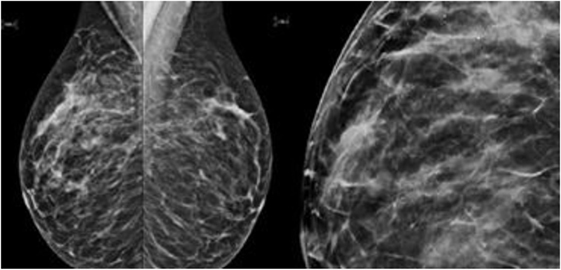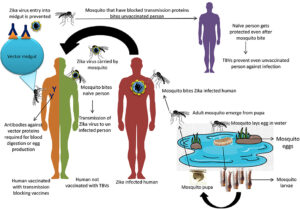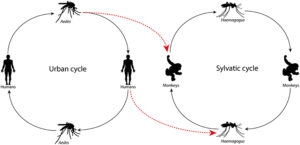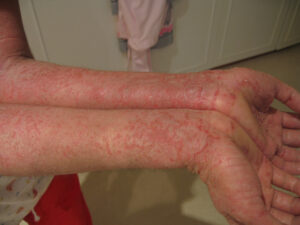Paget’s Disease of the Breast (PDB) is a rare form of breast cancer that primarily affects the skin of the nipple and areola. While it accounts for only a small percentage of all breast cancer cases, its symptoms can often be mistaken for less serious skin conditions, leading to delayed diagnosis and treatment. Understanding the symptoms, diagnostic methods, and available treatments for this condition is crucial for early detection and improved outcomes.

What is Paget’s Disease of the Breast?
Paget’s Disease of the Breast is a type of cancer that begins in the ducts of the breast and spreads to the skin of the nipple and areola. It is named after Sir James Paget, who first described the condition in the 19th century. This disease is often associated with underlying breast cancer, either in the form of ductal carcinoma in situ or invasive breast cancer. The exact cause of this condition remains unclear, but researchers believe that it occurs when cancer cells from inside the milk ducts migrate to the surface of the nipple.
How Common is Paget’s Disease of the Breast?
This condition is relatively rare, accounting for approximately one to three percent of all breast cancer cases. It typically affects women over the age of fifty, although it can occur in younger women and, in rare cases, men. Due to its rarity and similarity to other skin conditions, it is often misdiagnosed, which underscores the importance of awareness and proper medical evaluation.
Symptoms of Paget’s Disease of the Breast
The symptoms of Paget’s Disease of the Breast often appear on the nipple and surrounding area, known as the areola. These symptoms may develop gradually and can be easily confused with more common skin conditions such as eczema or dermatitis. Recognizing these signs early can help ensure timely diagnosis and treatment.
Common Symptoms
- Flaky or Crusty Skin: The skin on the nipple or areola may become dry, flaky, or scaly, resembling eczema.
- Redness or Swelling: The affected area may appear red, inflamed, or swollen.
- Itching or Burning Sensation: Many individuals experience persistent itching or a burning sensation in the nipple area.
- Oozing or Bleeding: The skin may ooze fluid or bleed, especially if scratched or irritated.
- Nipple Changes: The nipple may become inverted, flattened, or distorted in shape.
- Lump in the Breast: In some cases, a lump may be felt beneath the skin, indicating the presence of an underlying tumor.
When to See a Doctor
If you notice any persistent changes in the appearance or sensation of your nipple or areola, it is important to consult a healthcare provider. Early evaluation can help rule out other conditions and determine whether further testing is necessary.
Diagnosis of Paget’s Disease of the Breast
Diagnosing Paget’s Disease of the Breast involves a combination of clinical evaluation, imaging studies, and laboratory tests. Since the symptoms mimic those of benign skin conditions, a thorough assessment is essential to confirm the diagnosis.
Clinical Examination
A healthcare provider will begin by performing a physical examination of the breast. They will assess the appearance of the nipple and areola, check for any lumps, and inquire about the duration and progression of symptoms. If Paget’s Disease is suspected, additional tests will be recommended.
Mammography
A mammogram is often the first imaging test used to evaluate the breast tissue. It can help identify any underlying tumors or abnormal areas within the breast. In some cases, Paget’s Disease may not show up clearly on a mammogram, particularly if the cancer is confined to the ducts near the nipple.
Breast Ultrasound
An ultrasound may be performed to provide a more detailed view of the breast tissue. This imaging technique uses sound waves to create pictures of the internal structures of the breast and can help differentiate between solid masses and fluid-filled cysts.
Magnetic Resonance Imaging (MRI)
In certain situations, a breast MRI may be recommended. This test provides highly detailed images of the breast and is particularly useful for detecting small tumors or abnormalities that may not be visible on a mammogram or ultrasound.
Biopsy
A biopsy is the definitive method for diagnosing Paget’s Disease of the Breast. During this procedure, a small sample of tissue is removed from the affected area and examined under a microscope. There are several types of biopsies, including:
- Surface Biopsy: A sample of the skin from the nipple or areola is taken using a scraping tool.
- Core Needle Biopsy: A larger needle is used to extract a core of tissue from the breast.
- Surgical Biopsy: A portion or the entire suspicious area is removed for analysis.
The biopsy results will reveal whether cancer cells are present and help determine the extent of the disease.
Treatment Options for Paget’s Disease of the Breast
The treatment for Paget’s Disease of the Breast depends on several factors, including the stage of the cancer, the presence of an underlying tumor, and the patient’s overall health. The primary goal of treatment is to remove the cancerous cells and prevent the disease from spreading.
Surgery
Surgery is the most common treatment for Paget’s Disease of the Breast. There are two main surgical options:
- Lumpectomy: Also known as breast-conserving surgery, this procedure involves removing the affected tissue while preserving as much of the breast as possible. It is often combined with radiation therapy to reduce the risk of recurrence.
- Mastectomy: In cases where the cancer has spread extensively or if there is a large underlying tumor, a mastectomy may be recommended. This involves removing the entire breast and, in some cases, nearby lymph nodes.
Radiation Therapy
Radiation therapy uses high-energy beams to destroy cancer cells. It is often used after a lumpectomy to target any remaining cancer cells in the breast. Radiation therapy may also be recommended for patients who are not candidates for surgery.
Chemotherapy
Chemotherapy involves the use of drugs to kill cancer cells. It is typically reserved for cases where the cancer has spread beyond the breast or if there is a high risk of recurrence. Chemotherapy may be administered before surgery to shrink the tumor or after surgery to eliminate any remaining cancer cells.
Hormone Therapy
If the cancer cells are hormone receptor-positive, hormone therapy may be prescribed. This treatment works by blocking the effects of estrogen or progesterone, which can fuel the growth of certain types of breast cancer. Hormone therapy is often used in conjunction with other treatments to improve outcomes.
Targeted Therapy
Targeted therapy involves drugs that specifically attack cancer cells without harming normal cells. For example, if the cancer cells produce excessive amounts of a protein called HER2, medications such as trastuzumab may be used to block its effects. Targeted therapy is often combined with chemotherapy for more effective results.
Living with Paget’s Disease of the Breast
A diagnosis of Paget’s Disease of the Breast can be overwhelming, but understanding the condition and available treatment options can help ease anxiety. Patients are encouraged to work closely with their healthcare team to develop a personalized treatment plan and address any concerns they may have.
Emotional and Psychological Support
Dealing with breast cancer can take a toll on mental health. Many patients benefit from joining support groups, speaking with a counselor, or connecting with others who have experienced similar challenges. Emotional support plays a vital role in coping with the disease and maintaining a positive outlook.
Lifestyle Adjustments
Making healthy lifestyle choices can support overall well-being during and after treatment. These may include eating a balanced diet, engaging in regular physical activity, and avoiding tobacco and excessive alcohol consumption. Patients should also follow their doctor’s recommendations for follow-up care to monitor for any signs of recurrence.





